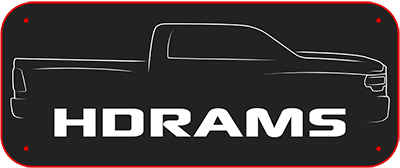- Joined
- Oct 5, 2021
- Messages
- 3,271
- Reaction score
- 3,054
New question for the OP (@content): Since we have similar TT weights and 3500's, are you using a WDH? I read that whole other thread about the air suspension and wow - I have a lot to learn (also, a little worrysome about the uneven driver/passenger sides not equal?). One thing I am having trouble googling is how you are supposed to use the Alt Height when hooking up your TT, and if you are using a WDH (I know its not required for these weights but I would like to to help sway - I have the short 149" wheelbase) what order do you do everything.
In my head I was thinking the Alt Height actually *adds* air to the bags to offset the loaded hitch. But it does the opposite and LOWERS the rear height by about 1", to level it from the unloaded 1" factory rake. So you do that first. Then add the trailer. Now, if not using a WDH, do you *keep* the Alt Height set while towing, or do you return it to normal? I would think that it would currently be a little lower in rear and higher in front than when it was leveled using the Alt Height mode, but only slightly due to the fact its a 1 ton beefy suspension.
Now, I intend to use my WDH for sway help, and as a bonus return some weight back to the front and trailer axles. So I should 1) set Alt Height mode, 2) add trailer, 3) use hitch to distribute back to level, then 4) definitely keep the Alt Height mode, right?
So many videos and forum posts all over the map, many with 1500s and 2500s air suspensions or aftermarket airbags, muddying up the waters. I can't find a good TT hookup video for a 3500 except JB Reviews but of course he doesn't use a WDH and his video was a little ambiguous on whether you keep Alt Height while towing or only use it to hook up.
I'll keep researching when I get more time, but if someone in my similar situation (8K+ pound TT with a 3500+Air SRW) already knows then its worth a shot asking here first.
Thanks!
-T
Once your WDH is setup it works seamlessly with auto-level and alt ride height.
Setup is a little more time consuming than with a traditional suspension, but still pretty easy.
The easiest way I have found to setup a WDH with the auto-level is to measure the front fender height empty, hitch the trailer up without WDH engage alt height and remeasure. Now start adjusting the WDH preload until you’re about 1/2 way between the two measurements (good rule of thumb if you’re not using a scale). You’ll want to stay in alt for all of this. Once that is done check your trailer for level, and adjust the hitch height as required. That’s it, you’re done. The truck will always be at that height as long as you tow in alt, which you want to. The truck will automatically compensate for any additional payload you have in the truck and it won’t reduce the WDH effectiveness. If you do tow in normal height after adjusting the WDH in alternate you will reduce the WDH effectiveness.
It does add air to support the load in alternate height, but it first has to purge the air to lower onto the overloads. The truck the adds air as required to compensate for the payload being supported by the rear suspension. Ive seen it say “raising” into alternate height multiple times after I hitch up since it was lowered below alt height with the weight.
Lastly, the primary purpose of a WDH is to transfer tongue weight back to the front axle and trailer axles. Sway control isn’t needed on a properly built and loaded trailer.
